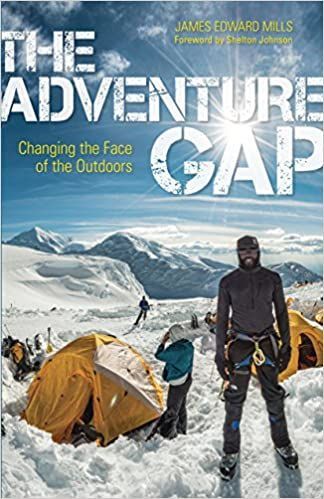Enjoying Outside, Inside - BIPOC Writing on the Outdoors

When I looked at my bookshelves I realized that they could be richer in outdoor writing from authors who are Black, Indigenous, and People of Color. As biological ecosystems are more fertile and resilient when they are diverse, so too with intellectual and cultural systems. Here are a few books that have enriched me lately; this list largely features Black writers, so more will come.
Colors of Nature: Culture, Identity, and the Natural World. Alison H. Deming and Lauret E. Savoy. The editors note that nature writing as a literary tradition began with “solitary explorations of wild places…seeing nature as a place apart.” Yet, they say, “what is defined by some as an edge of separation between nature and culture, people and place, is a zone of exchange.” This anthology, from writers of varied racial and ethnic identities, is about the diversity of this human ecotone: the ways that our day to day lives are woven with nature, the ways that culture impacts nature, and how the ways that we connect with each other—or refuse connection—reflect our connections with nature. Often challenging, these essays and poems are also deeply healing.
Black Nature. Camille T. Dungy, ed. What poems does a person write about the outdoors when “both emancipation oaks and hanging trees” are part of nature? Or when an invitation to write “a tree poem” stimulates the realization that there is not a tree in sight among the asphalt? Hundreds of poems by nearly a hundred poets provide myriad answers, complex, angry, amused, loving, beautiful, always stimulating. Browse this anthology and your view of nature will be greatly expanded, if not exploded.
The Unlikely Thru-Hiker: An Appalachian Trail Journey. Derick Lugo. An urbanite with a taste for challenge, all the more if it involved travel, Derick Lugo had hardly hiked at all when he picked up Bill Bryson’s book A Walk in the Woods. Through-hiking the Appalachian Trail from Georgia to Maine became his next adventure. Another hiker recommended that he photograph the people he met as well as the landscape, and this memoir follows the advice; Lugo portrays the traveling community that the sole Black through-hiker of the season encountered on his months-long journey, to moving effect.
The Adventure Gap: Changing the Face of the Outdoors. James Edward Mills. It can be hard to imagine yourself doing something when you never see people like yourself doing it. Expedition Denali, a majority-Black attempt to summit the highest peak of North America, was also a push to show that Black people can and do climb mountains. Mills portrays not only the physical challenge of that expedition but also the history of African-American outdoor adventurers, from Matthew Henson, arguably the first person to reach the North Pole—but not the one to get the credit for it—to Barbara Hillary, the first African-American woman to reach the Pole, at the age of 75.
-Amy Boyer
RECENT ARTICLES






